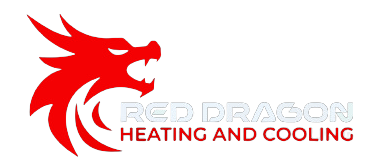- 518.348.9000
- [email protected]
- 117 Van Rd Gloversville,NY 12078
Duct Sealing: Enhancing HVAC Efficiency in Homes
Duct sealing is an essential aspect of maintaining an efficient and comfortable home. Sealing your ducts can significantly reduce energy bills by ensuring hot or cold air is not wasted. Leaky ducts can cause your heating and cooling systems to work harder, leading to higher energy consumption and increased costs.
Proper duct sealing also improves indoor air quality. By preventing contaminants from entering the ductwork, it helps in maintaining a healthier living environment. This is particularly important for individuals with allergies or respiratory conditions.
In addition to energy savings and improved air quality, duct sealing enhances overall comfort. By ensuring even distribution of air throughout the home, it eliminates hot or cold spots, making every room more pleasant.

518 Red Dragon Service Areas Include :

Amsterdam
Amsterdam Duct sealing

Gloversville
Gloversville Duct sealing

Johnstown
Johnstown Duct sealing

Broadalbin
Broadalbin Duct sealing

Fonda
Fonda Duct sealing
Mayfield
Mayfield Duct sealing
Northville
Northville Duct sealing

Importance of Duct Sealing
Proper duct sealing plays a crucial role in energy efficiency, indoor air quality, and the overall longevity of HVAC systems. Addressing leaks and ensuring ducts are well-sealed can result in noticeable benefits for homeowners.
Energy Efficiency
Sealed ducts prevent conditioned air from escaping, ensuring it reaches every room as intended. Leaks can cause heating or cooling systems to work harder, leading to higher energy bills. By sealing ducts, energy loss is minimized, and the system operates more efficiently.
In addition to lower utility costs, improved energy efficiency contributes to a reduced carbon footprint. Efficient energy use is essential for both economic reasons and environmental sustainability.
Indoor Air Quality
Leaky ducts can allow dust, pollutants, and allergens to enter the system and be distributed throughout the home. Sealing ducts helps prevent these contaminants from infiltrating living spaces. This is particularly important for individuals with respiratory issues or allergies.
Well-sealed ducts also help maintain consistent air pressure, reducing the likelihood of drawing in particles from attics, basements, or crawl spaces. Enhanced indoor air quality leads to a healthier and more comfortable living environment.
System Longevity
Duct sealing reduces the wear and tear on HVAC systems by ensuring they do not have to work overtime to compensate for lost air. This can extend the lifespan of the equipment, leading to fewer breakdowns and repairs.
Additionally, a well-maintained system operates more quietly and reliably. Investing in duct sealing can defer the need for costly replacements, offering long-term financial benefits and peace of mind.
Duct Sealing Techniques
Effective duct sealing can be accomplished through various methods, each with distinct advantages and considerations. The choice of technique depends on the type of ductwork, accessibility, and budget.
Manual Sealing
Manual sealing typically involves using mastic, a thick adhesive paste, or foil tape. Mastic is applied with a brush or a hand, creating a durable seal.
Foil tape provides a clean application, adheres well, and is useful for sealing joints in smaller spaces.
Both mastic and foil tape are effective for sealing gaps and leaks in metal or flexible ductwork, but proper surface preparation is essential to ensure adhesion. Cleaning the duct surface of dust and grease before applying the sealant is crucial for a lasting seal.

Aeroseal Process
The Aeroseal process involves injecting aerosolized sealant particles into the ductwork. These particles travel through the system, finding and sealing leaks from the inside out.
This method is effective for hard-to-reach areas and can seal leaks that manual methods might miss.
The process requires professional equipment and expertise, making it more costly but highly reliable. Aeroseal can significantly improve system efficiency, reducing energy loss and improving indoor air quality.
Foil Tape vs. Mastic
Foil tape and mastic are both used for duct sealing, but they have different applications. Foil tape is convenient for quick fixes and small gaps.
It can be easily applied and inspected for adherence. Mastic, on the other hand, is more flexible and durable, capable of sealing larger gaps and irregular surfaces.
Foil tape works well in visible areas or where aesthetic concerns are paramount, while mastic is preferred for areas requiring a robust, long-lasting seal. The choice between these two often depends on the specific needs of the ductwork and the desired balance between ease of application and durability.
WHAT WE DO
Expert HVAC Care, Always.


Residential Installations
Trust us to transform your space into a haven of perfect climate control with our expert HVAC installations.

Commercial Installations
Trust us to transform your space into a haven of perfect climate control with our expert HVAC installations.

Thermostat Installations
Trust us to transform your space into a haven of perfect climate control with our expert HVAC installations.

Air Quality Solutions
Trust us to transform your space into a haven of perfect climate control with our expert HVAC installations.
